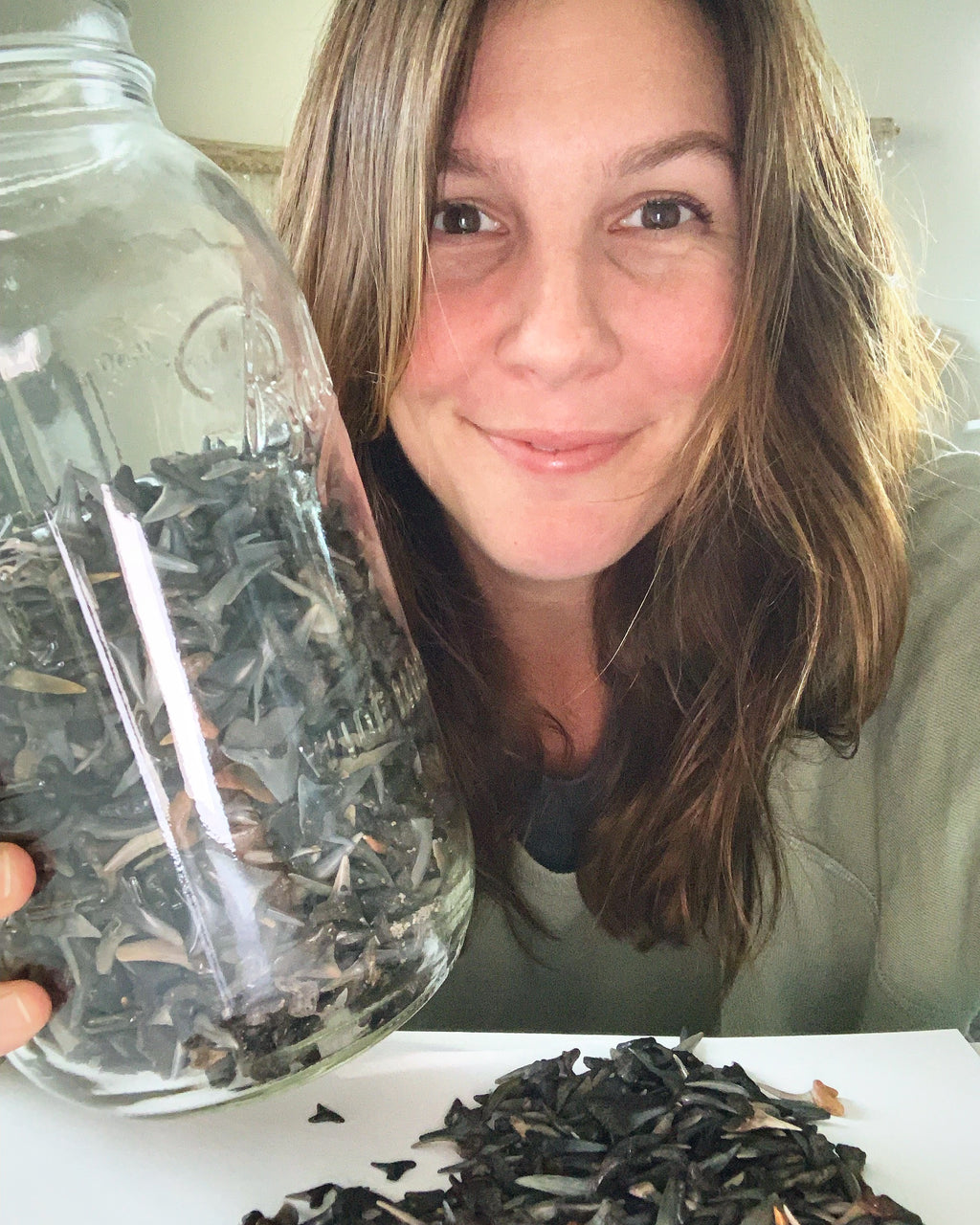
Our locally found shark tooth necklaces and earrings are a labor of love. Creating them is just a small part of the big picture.
The first step is finding the teeth. Being able to say we get to go to the beach for work is great, but it takes hours and hours, patience, and the right tide conditions to find even a few teeth. (although, it isn't a bad thing to have professional shark tooth hunter on the resume!)
Then, the teeth all have to be the right size and shape, and have the durability to be worked on without breaking. Once we go through our stash from a day's search, only a few might turn out to be good enough to be used in production.
It takes even longer for earrings since we have to create pairs. Since no two teeth are exactly alike this can take a while, as we try to match size, shape and color for the perfect earring duo. We have to spill our collection onto a table top and separate hundreds of teeth for the perfect combination.
The teeth have to be big enough to withstand the electroplating process, while not being too sharp for obvious safety reasons. They also have to be a certain kind of tooth, as we've learned through the years. Most clients prefer bull shark, tiger shark, mako, and of course megalodons, rather than the elongated thinner teeth like from a sand shark.
While we can't control the color of the shark tooth, we try to have variety. Our locally found shark teeth are already fossilized, which means that the original material which made up the tooth has been replaced by minerals. The sand and sediment in which the shark teeth have been deposited is what determines the color of the tooth. This obviously varies for teeth found all over the world.
The teeth we find here in North Florida are typically grey/dark grey/brown/black and sometimes creamy brown or greyish white, due to the mixing of sediment from the St. Johns River with our ocean.
Once we choose teeth, the design process comes next. Elizabeth considers the color and shape of each tooth, and how she wants the electroplating to be designed. She draws and labels each tooth (or pair of teeth for earrings) for an order to our metalsmith with specific instructions on which metal and design she wants.
Once we get our teeth back the design process still isn't 100% done. Type of chain, length, accenting stones and clasp are all important to the final product.
We also do all photography and editing in house, as well as uploading the products to our website and putting them into our inventory system.
Working with Mother Nature to create gorgeous and functional jewelry can never be a rushed process, and it certainly can’t be done in huge batches. This is why we pride ourselves on our small batch collections, and the amount of care and genuine consideration for each piece throughout the design process.